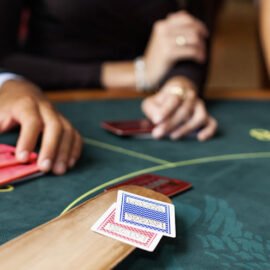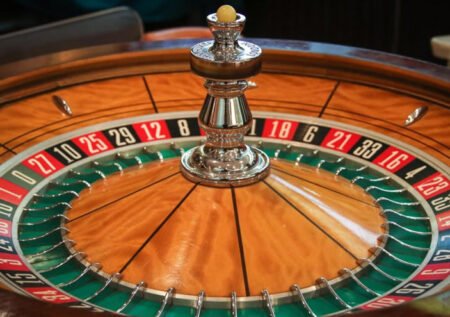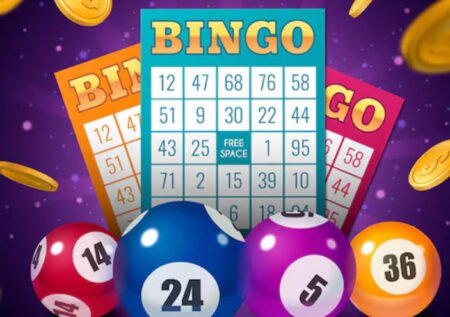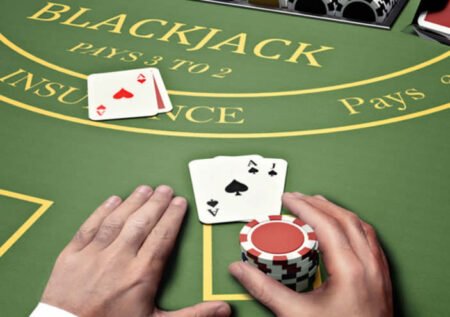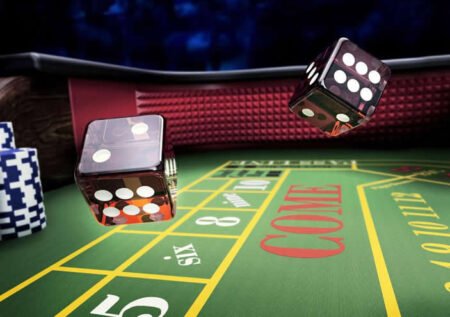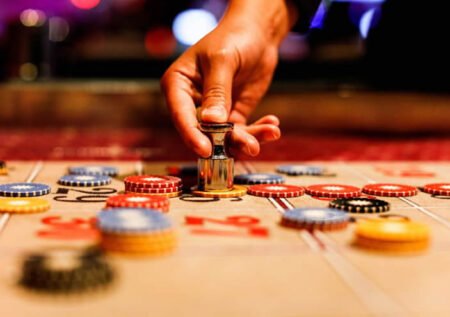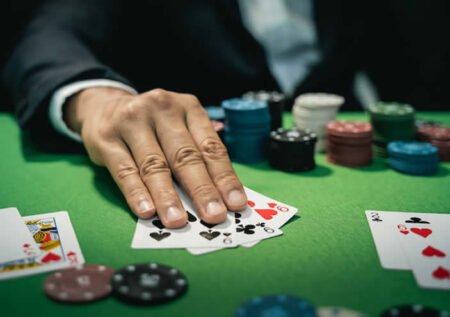Objective:
The objective of Chemin de Fer is to bet on the hand that you believe will have a total closest to 9.
Setup:
- Players: Chemin de Fer is typically played with 6 to 8 decks of cards and can accommodate up to 12 players at a time.
- Roles: There are two main roles in Chemin de Fer:
- Player: You are one of the players and can place bets on either your own hand or the banker’s hand.
- Banker: The banker is a player who deals the cards and represents the house. The role of banker rotates among the players in a counter-clockwise direction.
Gameplay:
- Betting:
- Players place their bets on either their own hand or the banker’s hand. There may also be an option to bet on a tie, but this is less common in Chemin de Fer compared to other baccarat variants.
- Dealing the Cards:
- The banker deals two hands of two cards each, face down. One hand is designated for the player who has made the highest bet (the “punter”), and the other hand is for the banker.
- Card Values:
- Cards 2 through 9 are worth their face value.
- 10s, Jacks, Queens, and Kings have a value of 0.
- Aces are worth 1 point.
- Scoring:
- The objective is to get as close to a total of 9 as possible. If a hand’s total is more than 9, you only use the last digit to determine the score. For example, a hand with a 7 and a 5 would total 2 (7 + 5 = 12, and 12 – 10 = 2).
- Drawing a Third Card:
- Depending on the initial totals, a third card may be drawn according to specific rules:
- If the player’s hand totals 0 to 4, they draw a third card.
- If the player’s hand totals 6 or 7, they stand (no third card).
- If the player’s hand totals 8 or 9 (a “natural”), no more cards are drawn.
- Depending on the initial totals, a third card may be drawn according to specific rules:
- Comparison and Payout:
- After all cards are dealt, the hands are compared. The hand closest to 9 wins.
- If a player’s bet matches the winning hand (either their own or the banker’s), they win even money (1:1) on their bet.
- If a player bets on a tie and wins, they usually receive an 8:1 payout, though ties are less common and can vary in payout rules.
- Banker’s Advantage:
- The banker has a slight statistical advantage in Chemin de Fer due to the rules on drawing additional cards.
- Rotation of the Banker:
- The role of the banker rotates among the players in a counter-clockwise direction after each hand.
Strategy Tips:
- Know the Rules: Familiarize yourself with when a third card is drawn based on the initial totals.
- Bet Wisely: Consider the odds and house advantage when placing your bets.
- Banker’s Edge: Recognize that the banker’s role has a built-in advantage due to the rules on drawing cards.
Chemin de Fer is a sophisticated and enjoyable card game, blending strategy with luck, and it’s popular in European casinos for its dynamic gameplay and suspenseful outcomes.
Remember that exact rules may vary depending on the casino or the variant of the game you’re playing. It’s important to know the specific rules before you start playing. Have fun!
